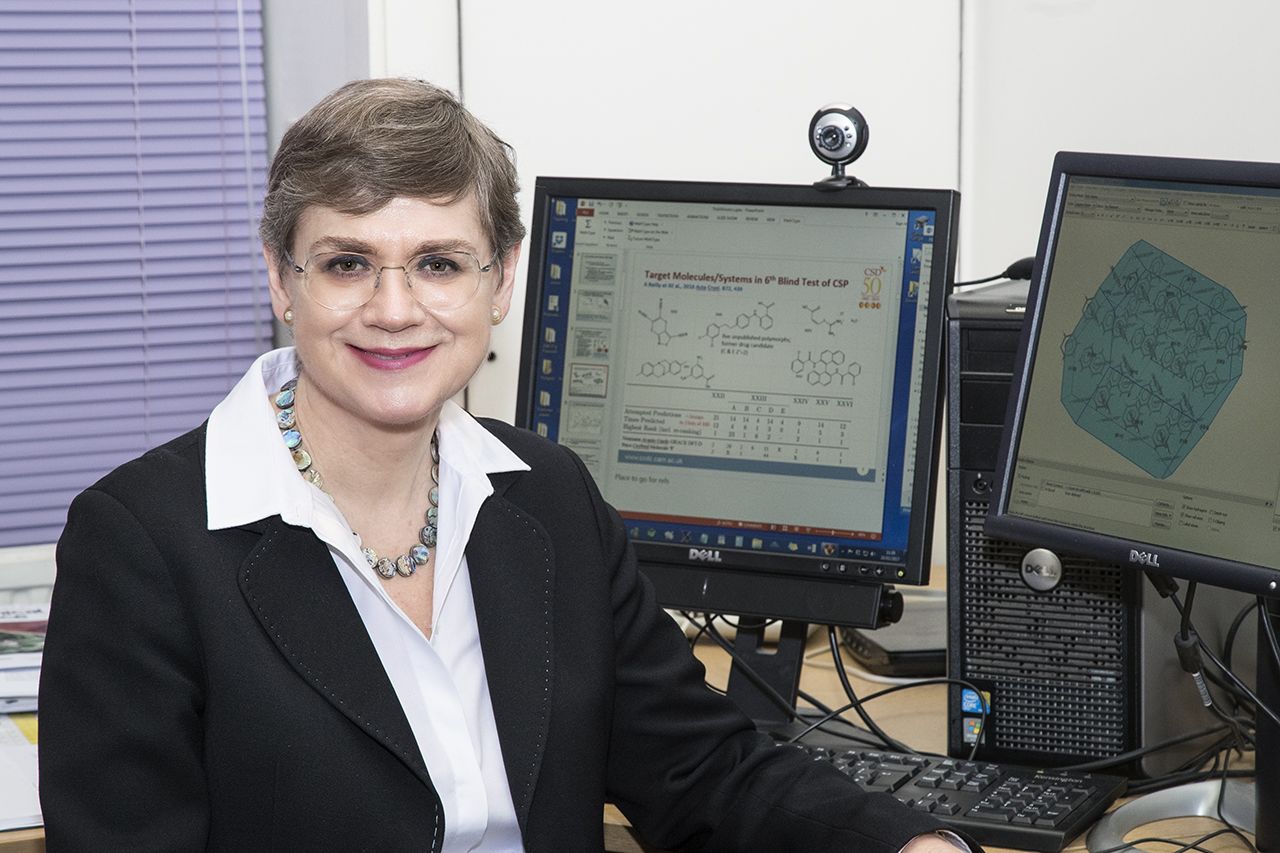Sally Price, 1974
"being in a mixed college was seen as rather risqué"

Professor Sally Price, FRS read Natural Sciences at Clare. She is now is Professor of Physical Chemistry at University College London. Sally was elected a Fellow of the Royal Society (FRS) in 2017 and was awarded the Interdisciplinary Prize by the Royal Society of Chemistry in 2015.
Who was your greatest Clare influence and why?
My peer group of Natural Scientists. Credit for selecting and guiding a diverse group with a zest for life as well as a talent for science, goes to Mike Bown, our Director of Studies. Supervisors like Volker Heine, and Andy Holmes were hugely encouraging.
Sally's Story
The early seventies at Clare were a different world; being in a mixed college was seen as rather risqué. We were living intensely, with 9am lectures six days a week, and chapel on Sundays, combined with late nights and somehow getting the work done mixed in with the socialising. My only outside contact was the weekly phone call home from the telephone box outside Memorial Court. This was the first I heard of the national news coverage of the Cambridge Rapist, as it meant my mother was now pleased that I was in a mixed college. Clare may then have regretted distinguishing the women’s staircases by including the women’s forenames on the entrance boards, but the soft loo paper and bedroom mirrors were welcome. The huge numbers of people in the first year Natural Sciences lectures and practicals would have been quite intimidating, had there not been a phalanx of Clare men keeping an eye out for “their”” Clare women. The ratio of men to women in the physical sciences was then far worse than the overall ten to one in Cambridge. Fortunately, it has improved considerably since then.
I did marry one of the many people I met at the fresher’s disco, G. David Price, in the College Chapel, with student discounts that included the special license. This enabled us to move to a Clare apartment (St Regius), which was a luxury compared with either of the private digs we were in for our first postgraduate year. My chief memory of the MCR was the weekly setting up of a beer keg prior to the dinners, which got less messy with practise. We finished our PhD theses in less than 3 years, so that we could go to Chicago for a year’s postdoctoral research and return to Cambridge. Although I was initially only a postdoc, I was offered a fellowship at Fitzwilliam College as their third female fellow. Later, when I accepted the position of Director of Studies in Natural Sciences at Fitzwilliam, I asked Mike Bown around for dinner to get his advice on how he’d helped Clare scientists succeed, which also worked well for the Fitz students.
I have seen the impact of my field of theoretical chemistry research transformed, partly by the expansion of computer power. My PhD involved quantum mechanics on two hydrogen molecules, requiring significant use of the university main-frame. I never imagined that I would be visiting pharmaceutical companies to discuss how modelling the forces between molecules could predict the crystal structures and properties (solubility, morphology, etc) of the small molecule drugs in development. I’ve been using all the subjects that I studied within Natural Sciences, and often wishing that I’d been better at organic chemistry. Furthermore, I’ve been collaborating with a huge range of experimental and computational scientists, from chemical engineers, pharmaceutical scientists and physicists developing the quantum mechanics codes. My education at Clare with contacts outside chemistry gave me the ability to lead as well as contribute to interdisciplinary collaborations.